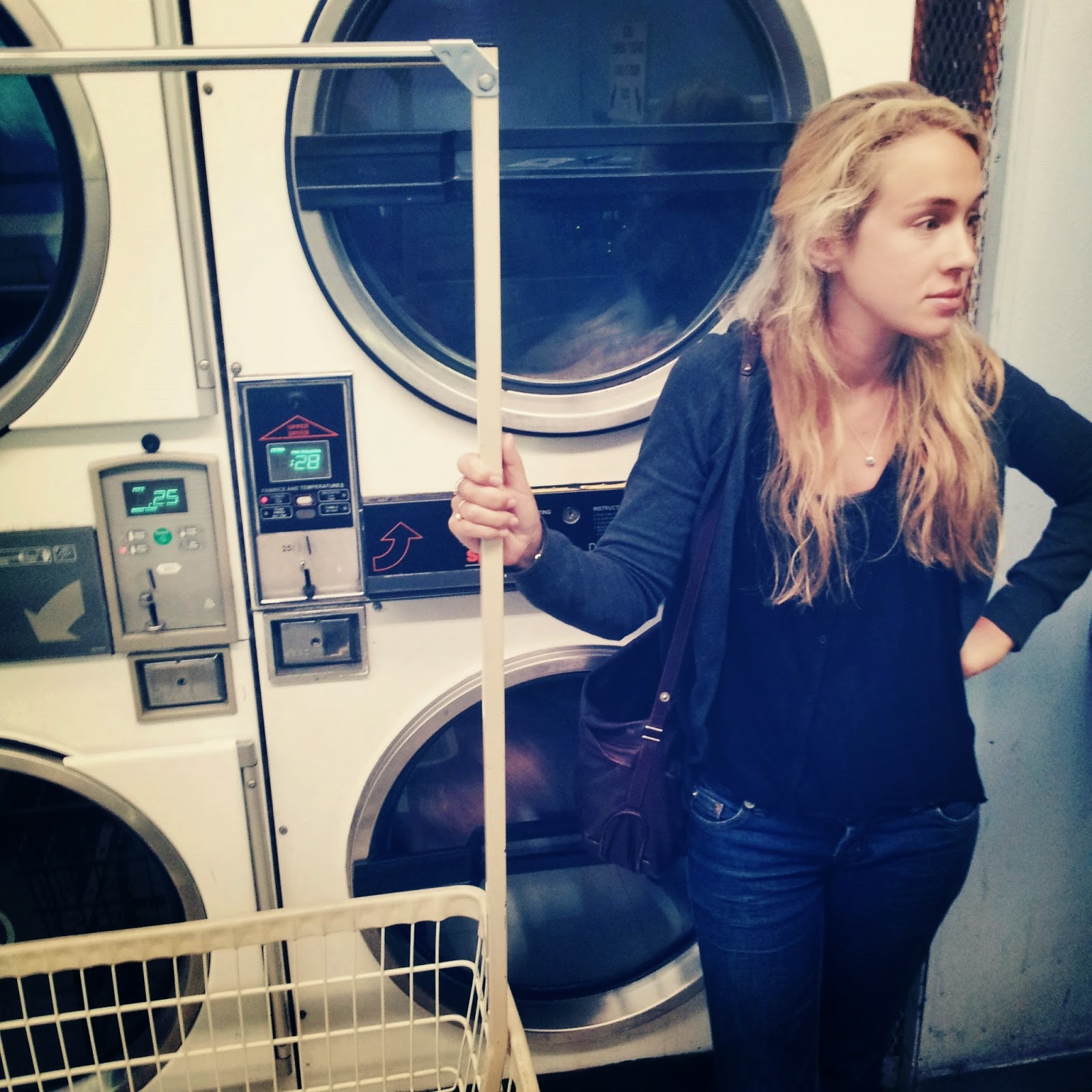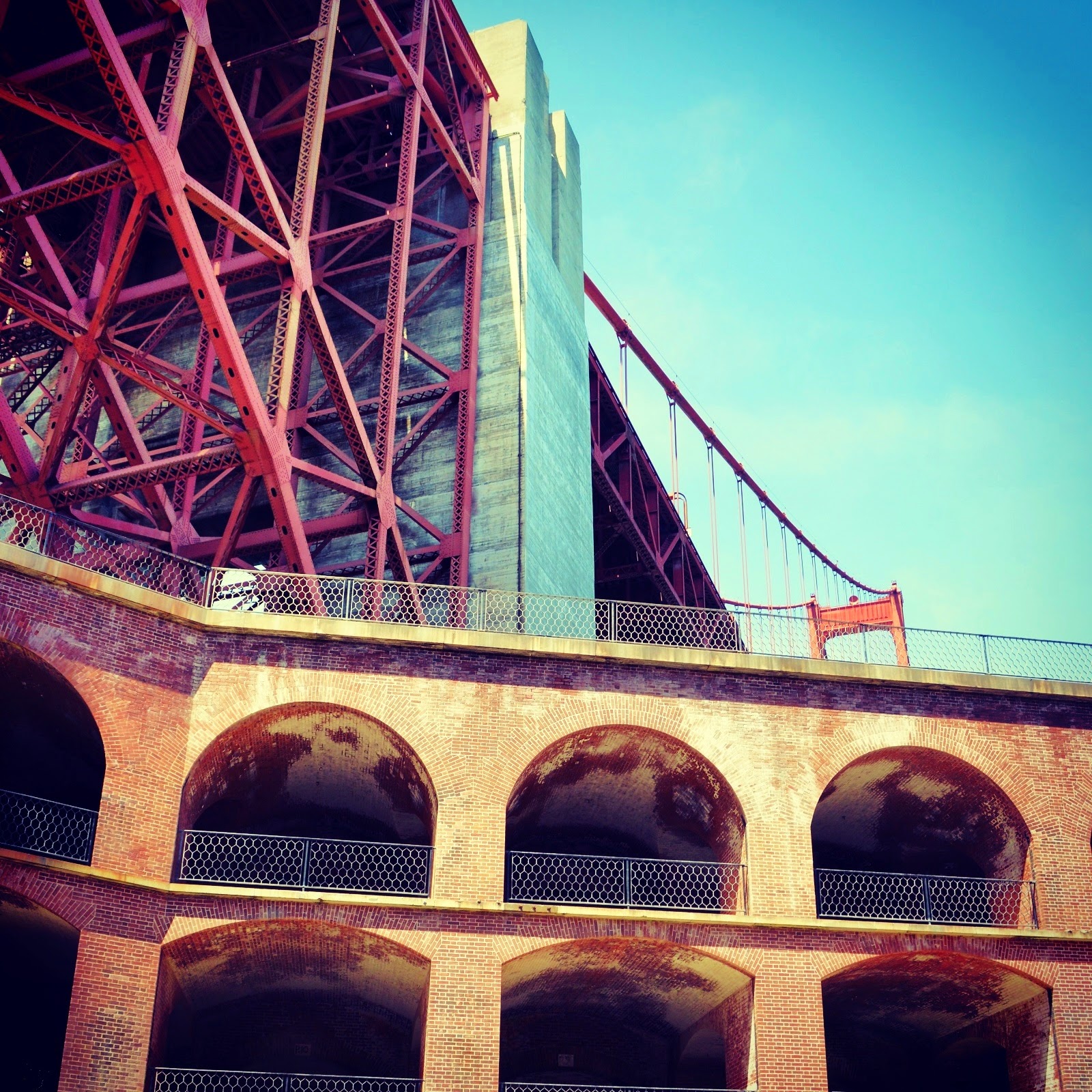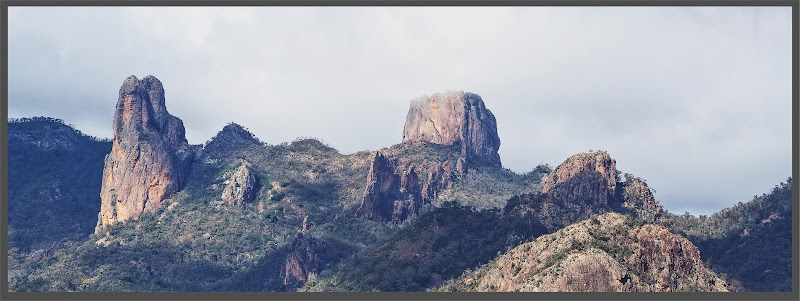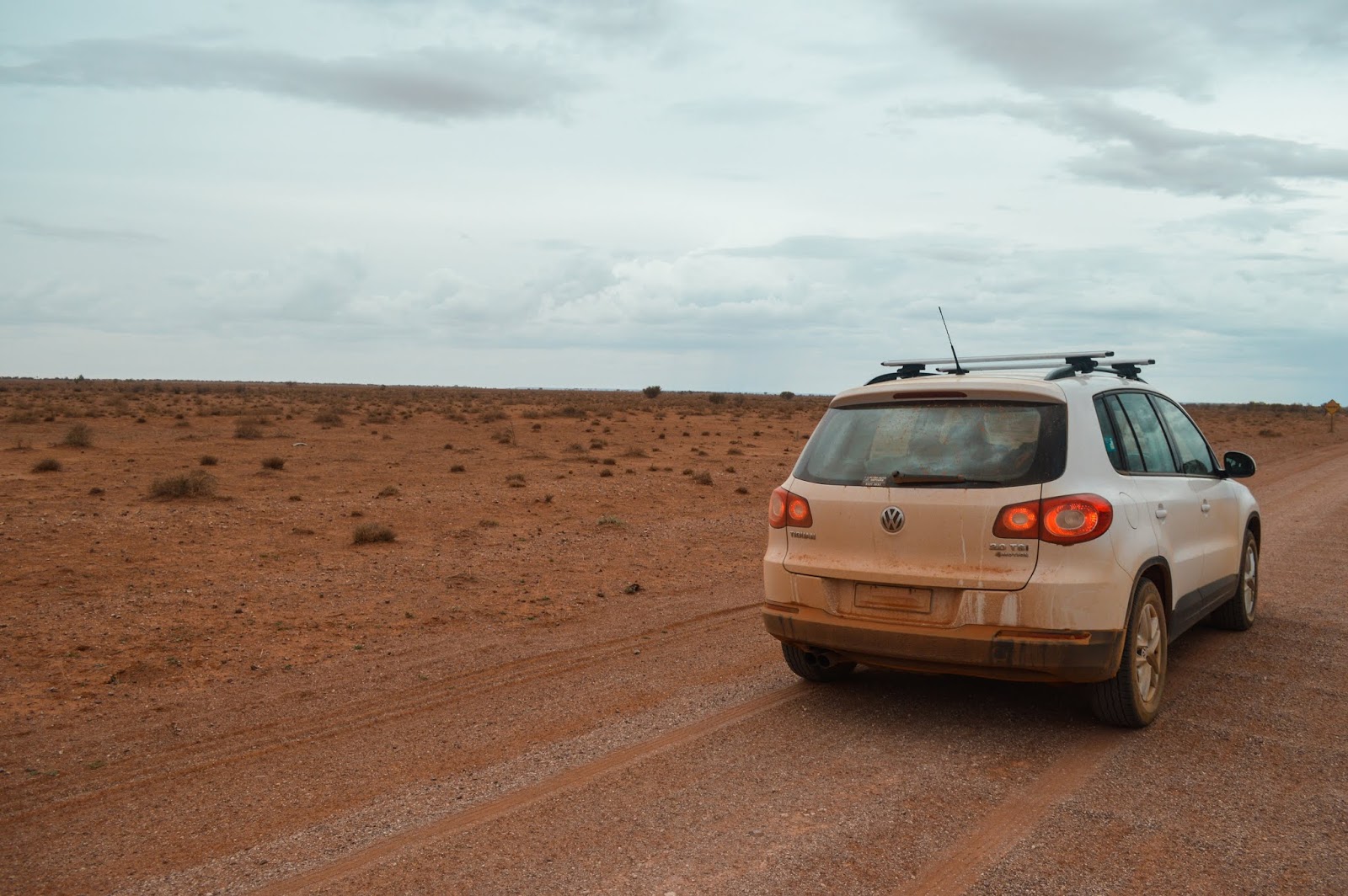Our first fun night in San Fran consisted of going to a
local coin operated Laundromat to do the past 3 weeks’ worth of washing! Surprisingly
we weren't the only ones in there ... The whole place felt so 80’s – even the
change and washing powder machines were pretty vintage. We paid $8 to do one
giant load (inc purchasing washing powder) and 30 minutes worth of tumble drying.
Pretty cheap Saturday night out to be honest….
 |
| Laundry Lady |
 |
| change machine/soap dispenser |
The next morning armed with our MUNI passes, we caught the Metro to the Bernal
Heights district of San Francisco. At the top of Billy Goat Hill stands a tree
with a rope dangling from one of the branches. Grabbing the rope you leap into
flight and the ground instantly drops out from under you and you are swinging
high above the San Francisco skyline and the homes below. Pretty exhilarating! After
swinging over the city, we walked to another hidden gem of the city. Tucked in
amongst a residential street are two long, steep concrete slides. These are not
for the faint hearted! You go down pretty fast. Some locals recommended sliding
down on cardboard otherwise the friction burns are not fun. We had a couple of races
– I was sliding champion.
 |
| San Francisco from the top of Billy Goat Hill |
 |
| Swinging over San Francisco! |
 |
| Tim swinging higher |
We then jumped on a bus to the West side of San Fran and to
Golden Gate Park. Despite the overcast day, it was packed with cyclists, inline
skaters, skateboarders and dog walkers. We walked around Stow Lake and then up
Strawberry Hill: an island in the centre of the lake. From the top there were
views of the Golden Gate Bridge and Mount Tamalpais. Heading back down through
ornamental Japanese gardens, bridges and waterfalls we made our way to the De
Young Museum designed by Herzog and de Meuron. It’s a beautiful building – clad
in copper which is slowly oxidising to complement the surroundings. Jagged
shapes have been cut into the building which when seen from inside reveal
courtyards and gardens. The nice lady on the door told us the general admission
was free from 4.30 so she suggested we hang around for 15 minutes before going
in. Once inside we wandered around the collections of American Art from the 17
th
– 21
st centuries as well as international contemporary art. My favourite was "Anti Mass", a wire and charcoal sculpture constructed from the charred remains of a Southern Baptist Church. All that art made us hungry so we jumped on another bus to the Japanese District for a really good sushi dinner.
 |
| De Young Museum |
 |
| Anti Mass, Cornelia Parker |
The following morning,
with the weather reminiscent of a London winter’s day, we made our way to the
Northern tip of San Francisco and the Presidio district. The Presidio park
consists of a 300 acre forest and is symbolic of its military legacy
(planted by the US army in the late 1880’s). A great place for hiking and
cycling, there are also several art installations by the artist Andy Goldsworthy,
which explore the character of the park’s forest. One installation “Spire”
celebrates the lifecycle of the historic forest. At its base it is 4.5m and 29m
high and made from 37 Monterey Cyprus trunks. It is also very reminiscent of the
nearby architecture such as the Transamerica Pyramid. Another sculpture (and
probably my favourite) is “Wood Line”. Whereas Spire reaches upwards, Wood
Line flows elegantly into the valley below. It is built in a large grove of
Eucalyptus and Cyprus trees, but over the years the Cyprus died leaving gaps,
and so this simple sculpture fills the empty space.
 |
| Spire |
 |
| Wood Line |
From Presidio we caught the bus down to the waterfront and wandered through the
market place in the old Ferry Building which is now transit hub turned foodie
heaven; all hand-made, gluten free, organic, vegan products. We walked along
the pier down to Fisherman’s Wharf and infamous Pier 39. It was ridiculously
busy, so many tourists! We headed straight to the docks to watch the San
Francisco Sea Lions sunbathing and fighting each other for prime spot. San
Francisco famously boasts some of the steepest streets in the US, so we made
our way to Lombard Street: so steep it has been created with switchbacks all
the way down the one way hill, past beautiful Victorian mansions and vibrant
flowers. After walking both down and then back up Lombard we headed back down to the waterfront for high tide and
to an acoustic sculpture located on the tip of a jetty called The Wave Organ. The waves interact with the installation through a series of pipes and conveys
the ocean's sounds.
 |
| Fisherman's Wharf |
 |
| Pier 39 Sea Lions |
 |
| Friendly Sea Lion |
 |
| Steep Streets |
 |
| Lombard Street Switchbacks |
 |
| The Wave Organ |
The next day, with the
weather still not improved, we decided to walk down to Japantown and explore it
properly. Following the San Francisco earthquake of 1906, many Japanese and
Japanese Americans relocated to this area downtown. The focal point is the
Japan Centre and Peace Pagoda; a five tiered concrete stupa in the centre of
the square. From here we walked to Chinatown; the oldest in North America and
largest Chinese community outside Asia. In reality, there are actually two Chinatowns:
one that charms the tourists and one that is truly local, and they both merge
into one over several blocks. Once we were past the kitschy plastic souvenirs,
we got into the depth of the market where shouting matches over live turtles,
chickens and pak choi were occurring.
 |
| Japan Centre |
 |
| Peace Pagoda |
 |
| Japantown |
 |
| Chinatown |
We carried on wandering down Chinatown and past the
Transamerica Pyramid, until we reached the historic Telegraph
Hill district and Coit Tower. This art deco tower built in 1933 is 64m tall and
built of unpainted reinforced concrete. We got to the top of the tower just as
the sun started to break through the fog and were rewarded with great 360
degree views of the city. There are murals all the way round inside the tower’s
base, painted in 1934 by a group of artists depicting life in California during
the depression. From one concrete building we caught the bus to another: the
cathedral St. Mary of the Assumption built in 1970. This beautiful cathedral
pushes concrete engineering to the limit but the effect is amazing. The roof is
composed of 8 hyperbolic paraboloids which flow upwards until they meet in a
cross. Twisted pylons support the cupola at each corner of the floor plan and
these are especially nice as the wooden shuttering used is visible on the
concrete.
 |
| Transamerica Pyramid |
 |
| Fort Point |
 |
| Tall Tim |
 |
| Under the bridge at Fort Point |
 |
| Halfway across |
 |
| Golden Gate |




































Comments
Post a Comment